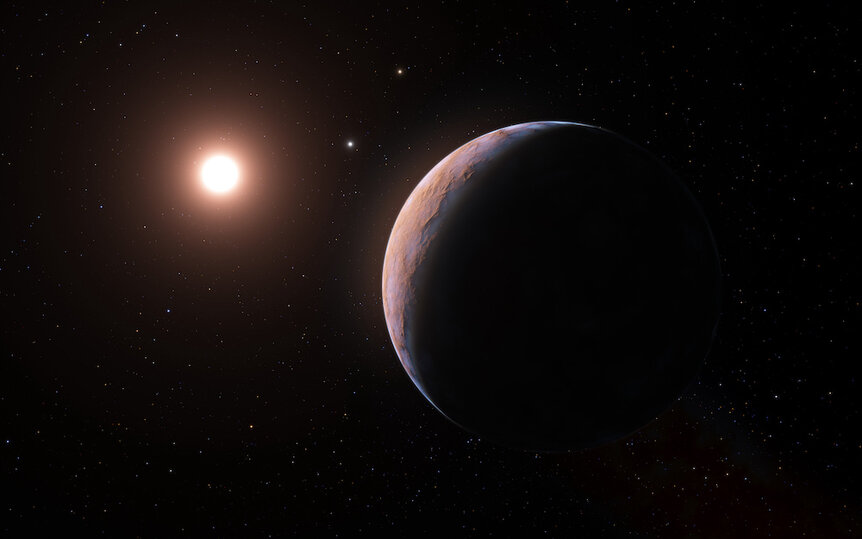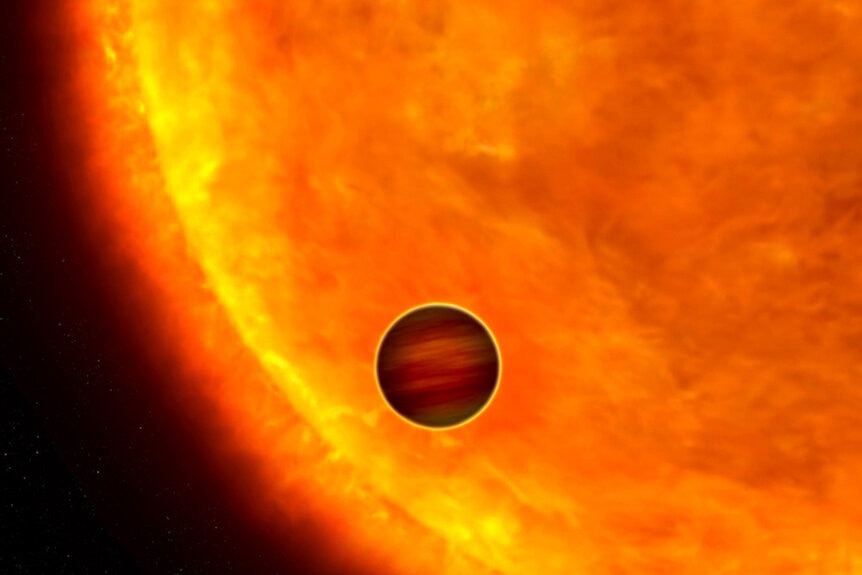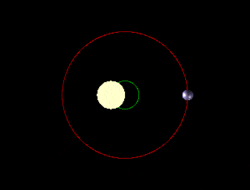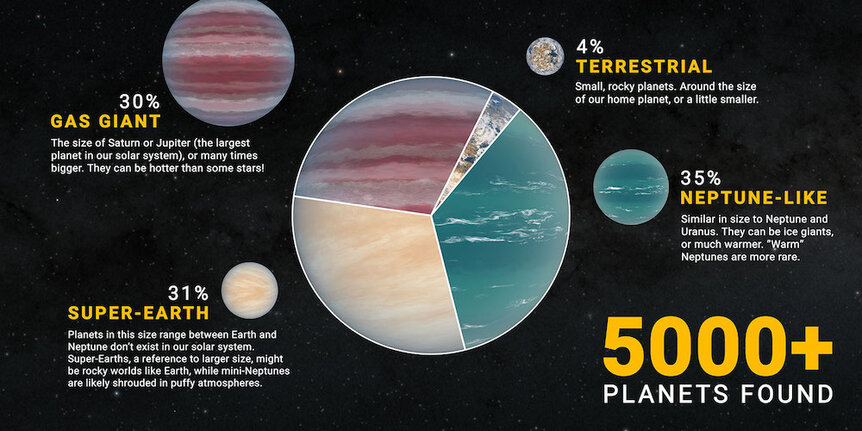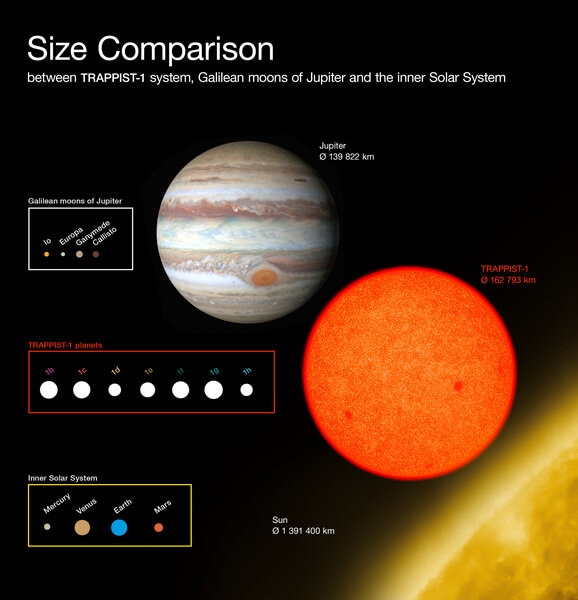Create a free profile to get unlimited access to exclusive videos, sweepstakes, and more!
5,000th exoplanet found!
The first was announced in 1992. What a difference 30 years makes.
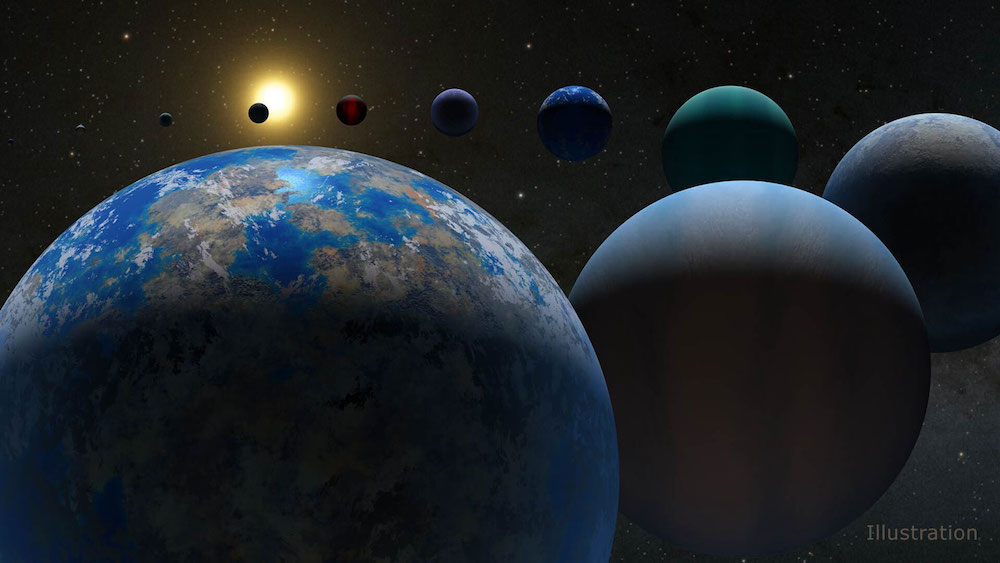
Yesterday, astronomers announced that the number of known exoplanets — alien worlds orbiting other stars — has topped 5,000.
Five thousand strange, new worlds. Amazing.
The odometer clicked over with the addition of a whopping batch of 65 new planets statistically confirmed, mostly from NASA’s K2 mission, an extension of the Kepler space-based observatory’s original mission.
This has been a long time coming. The first confirmed exoplanets discovered were announced in early January, 1992. They were found orbiting a pulsar called PSR 1257+12, the rapidly rotating super-dense remnant core of a massive star that exploded as a supernova. To say the astronomical community was surprised is an understatement; that was pretty much the last place anyone expected to see a planet, let alone two, let alone the first two ever found. The best guess is that they formed from the debris of the star that didn’t get blown away entirely, which formed a disk around the pulsar and condensed into planets. A third was found in that system not too long after as well. In fact, the tale of the discovery of these planets is a fascinating one, and a great example of how science works.
While groundbreaking and amazing, though, it was still somehow dissatisfying. Astronomers are human, after all, and we wanted to know if planets could orbit stars like the Sun.
That discovery was made in 1995 with the planet 51 Pegasi b, a world with about half the mass of Jupiter. The host star 51 Pegasi is about 50 light years from Earth, and fairly similar to the Sun, though older and likely to be taking its first tentative steps to becoming a red giant. Even though it was found orbiting an actual star, the planet was still a shock: Its orbit is a mere 4.23 Earth days long, meaning it is extremely close to the star’s surface, probably something like 6 – 7 million km away. That means it’s hot, with a temperature of 1,000°C!
At first astronomers were skeptical, since a gas giant couldn’t possibly form that close to the star. But subsequent physical models showed that planets can migrate, moving inward toward their host star, and on occasion some can get very close. That almost happened with Jupiter in our own solar system; it’s thought that early on it was moving inward toward the Sun but the gravity of Saturn eventually yanked it back in a complicated dance.
And even so, astronomers were very skeptical about the existence of exoplanets at all. The method used to find them is called the radial velocity method — as a planet orbits a star, the planet’s gravity causes the star to make a small circle as well; technically both orbit their mutual center of gravity, called the barycenter. As the star moves around in a circle it moves toward the Earth for half the orbit and away for half, and that imparts a Doppler shift in its light. This can be measured, but is usually so small it’s an incredibly difficult observation. Also, there are many other confounding factors that can make it look like a planet orbiting the star when there isn’t one.
That ended with the planet HD 209458 b. It had been discovered using the radial velocity method, but orbital calculations indicated we see its orbit very nearly edge on. That means once per orbit it should transit the star, passing directly between us and the star. That creates a mini-eclipse, and a drop in the star’s light. The timing of that is predictable, and astronomers observed the star at the calculated time… and saw the star’s light drop. It was a phenomenal moment, and nearly all skepticism of the existence of exoplanets evaporated overnight.
As more planets were discovered it became clear we needed a dedicated space observatory to look for them. With no atmosphere to fuzz out starlight and placed in an orbit around the Sun to eliminate the day/night cycle of Earth, it could stare at a single spot in the sky and look for transits around many, many stars all at once. Thus was the Kepler observatory launched, which observed over 150,000 stars simultaneously in a single patch of sky in the constellation of Cygnus. It was hugely successful, finding over 2,500 exoplanets, half of the ones known at the moment. After four years in space, Kepler lost the use of the second of its four reaction wheels that point it at its target, but a clever technique developed by engineers allowed the mission to be extended in what was dubbed K2, which is still delivering newly discovered exoplanets to astronomers.
NASA followed this up with the launch of the Transiting Exoplanet Survey Satellite, or TESS, which scans the entire sky to look for exoplanets, and ESA’s CHEOPS — CHaracterising ExOPlanet Satellite — which observes bright stars already known to host planets, to observe them more carefully and learn what we can about the planets there.
And we’ve learned so much. One of the most common kinds of planets is bigger than Earth but smaller than Neptune, what we call super-Earths at the small end and mini-Neptunes at the large one. The funny thing is no such planet orbits the Sun (unless Planet 9 turns out to be one, but who knows). That means our solar system is a bit weird, not having such a common kind of planet. We’re still not sure why this is.
We see planets around stars bigger than the Sun, and around smaller. In fact, tiny, cool, and dim red dwarfs seem to be really good at making Earth-sized worlds, with that being hammered home by the astonishing discovery of the TRAPPIST-1 system, a star not much bigger than Jupiter yet hosts at least seven Earth-sized planets, three of which may have the right conditions for life as we know it.
We’ve found planets around white dwarfs, the dead cinders of stars that were once like the Sun, and in fact the oldest known evidence for an exoplanet was in data taken of a white dwarf in 1917! At the time it wasn’t known that the spectrum of the white dwarf van Maanen 2 showed evidence of a planet, but a century later we knew what to look for.
We’ve found planets around the nearest star to the Sun, Proxima Centauri, and — making my nerd heart sing — a planet orbiting 40 Eridani A, the canonical star that hosts Vulcan, the homeworld of Star Trek’s Spock!
We now know that there are likely as many planets in the sky as stars; not all stars host planets but some have systems like our own with multiple planets. That means there are hundreds of billions of planets in our Milky Way galaxy alone.
I used to wonder if Star Trek was overly optimistic, with so many planets to explore. Now we know that if anything it severely underestimated how many there are.
As for the real future, James Webb Space Telescope will be able to detect the chemical elements in exoplanet atmospheres, and the Nancy Grace Roman Space Telescope, currently being designed, may detect thousands more exoplanets yet.
Five-thousand planets is a lot. But it’s a drop in the bucket compared to what’s out there, a mere 0.000005% — give or take — of the possible planets in our galaxy. And hundreds of billions of galaxies out there like our Milky Way…
The astronomical future of discovery looks very bright indeed, and it’s full — full — of planets.
Per ardua ad planetarum!
Tip o’ the dew shield to my friend and exoplanet astronomer Jessie Christiansen, who manages NASA’s Exoplanet Database, is a newly appointed TED fellow, and who tirelessly answers the questions I pepper her with. She also did a Q&A about this 1.609 kilometerstone in exoplanet discovery.
